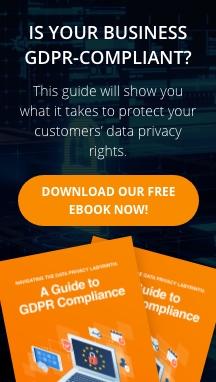As a rule, you need to set up unique and hard-to-crack passwords for each of your online accounts. But considering how the average user has 90 online accounts, following this practice means keeping track of 90 or more complex passwords — more than enough to give anyone a mental overload!
LastPass password manager addresses this very problem by acting as a virtual vault for your passwords. You can save all of your online accounts within LastPass — once you open the login page for one of the saved accounts, the app automatically inputs the appropriate password for you. This eliminates the need to memorize multiple login details. For your protection, all credentials stored in the app are encrypted using a secure “master” password, preventing unauthorized users from accessing your password vault.
If you’re implementing LastPass in your business, here are important steps you need to do:
Create an unbreakable master password
With LastPass, the only password you need to memorize is the one you use to log in to the app. Because this master password protects all your other login credentials, it has to be as secure as possible. LastPass recommends using 12 characters, but you can go for more — the longer, the better.
Avoid using personally identifiable information (e.g., your name or birthday) or commonly used passwords (e.g., “password,” “qwerty123”) as your master password. You can make the password stronger by stringing various letters in different cases, numbers, and special characters together.
Use the LastPass browser extension
Once you install the app, it adds an extension to your preferred internet browser. This extension lets you easily use LastPass as you browse the internet. For instance, every time you use the browser to log in to an online account, the extension will prompt you to save a manually-entered password to LastPass, or will allow you to generate a unique, random password to use for a site as you create an account.
Transfer passwords to LastPass
Some internet browsers have built-in password managers that store your credentials so you don’t have to type them every time you log in to your online accounts. While such features are convenient, they don't offer the same level of security that a full-fledged password manager does. Browser password managers can also interfere with LastPass and prevent it from performing optimally.
The LastPass extension can automatically detect passwords stored in your browser. The app will then prompt you to move all these credentials to your LastPass vault. Opting to do so will register your login details to the app and delete them from your browser.
Evaluate the strength of your existing passwords
Do you feel that your passwords are not secure enough? LastPass can help with that
Once you’re in the app, click on Security Dashboard. This analyzes all the passwords saved in the vault and gives you a score based on how secure they are. The app offers recommendations on how to increase your data’s security and even shows you which passwords are weak or duplicated. Following the app’s suggestions and replacing the problematic passwords with stronger ones will raise your score.
Generate strong passwords
Having to create unique passwords for each of your online accounts can take a lot of work. LastPass simplifies this crucial process by generating passwords for you.
The secure password generator function becomes available once you install the LastPass extension. When you create a new account or update an existing one, you will see a small lock icon on the password field. Clicking on this icon opens the password generator. You can set up different parameters, such as length and character sets, to control the complexity of your credentials. Any password created using the feature is automatically saved in your vault, so you won’t have to memorize it.
Implement multi-factor authentication (MFA)
LastPass supports MFA, so be sure to enable it to further increase the security of your online accounts. MFA requires users to provide additional proof of their identity besides their master password. This additional requirement prevents hackers who may have stolen or cracked your master password from accessing your LastPass account.
Without a doubt, LastPass is a powerful addition to your cybersecurity arsenal. Fidelis can help you take full advantage of LastPass’s robust features and get you started on other powerful tools to protect your data.
Learn what security measures you need to implement to prevent data breaches by downloading this free eBook today.


